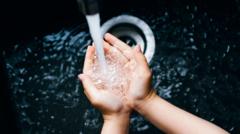A Wild Orangutan’s Self-Medication Secret
Deep in the forests of Sumatra, scientists made an unexpected discovery – a wild orangutan was treating its own wound using plants in a way that provided the first evidence of active wound medication in great apes. Researchers observed a male Sumatran orangutan named Rakus selectively using parts of a plant called Fibraurea tinctoria to soothe and cover a facial injury. The behavior matched the pharmacological properties of F. tinctoria and appeared carefully targeted, suggestive of intentional self-medication rather than random actions.
This observation sheds new light on the cognitive abilities of great apes and the evolutionary origins of medicinal plant use. It also highlights how much remains unknown about the complex behaviors of endangered species like the Sumatran orangutan. Scientists plan further study to better understand self-medication in wildlife and inform conservation efforts.
Treating a Wound in the Wild
The researchers have studied orangutans at the Suaq Balimbing research site in Gunung Leuser National Park, Sumatra for over 20 years. In June 2022, they noticed Rakus had a fresh facial wound, likely from a fight with another male. Three days later, he was seen consuming F. tinctoria, a plant locally known as akar kuning used in traditional medicine.
Rather than swallowing the leaves as food, Rakus chewed them without ingesting and applied the juice directly to the wound using his fingers. He repeated this process for seven minutes, coating the exposed flesh. Later, he fully covered the wound with chewed leaf material. The next day he ate more F. tinctoria leaves. Over subsequent observation periods, the wound showed no signs of infection and had closed within a week, healed within a month.
Analysis of F. tinctoria’s chemical compounds provided clues to Rakus’ behavior. The plant contains furanoditerpenoids and protoberberine alkaloids known to have antibacterial, anti-inflammatory, and wound healing properties. Its traditional use for treating injuries and infections supported the hypothesis that Rakus was self-medicating, using a biologically active substance to soothe pain and speed recovery.
Several factors suggested this was intentional behavior rather than random actions. Rakus selectively applied the plant mixture only to his facial wound. He repeated the process methodically over an extended timeframe. And F. tinctoria isn’t a major part of the orangutans’ regular diet at this site. No other individuals at Suaq have been observed using plants medicinally, but more evidence may exist elsewhere.
Self-Medication Across Species
Self-medication behaviors have been documented in various primate species like chimpanzees. Examples include leaf swallowing to expel intestinal parasites or chewing bitter plant parts when infections peak. However, topical application of healing substances directly to wounds is much rarer.
The only previous report involved chimpanzees applying unknown insects to wounds. Rakus’ targeted use of F. tinctoria’s known medicinal compounds provides the clearest case yet of active wound treatment with a pharmacologically active plant by a wild animal. His actions imply an understanding, however rudimentary, of the plant’s benefits.
This discovery adds orangutans to the list of great ape species exhibiting self-medication. Along with chimpanzees and gorillas, it reinforces the idea that our closest living relatives possess some basic knowledge of medicine derived from plants. Understanding their behaviors could shed light on the evolutionary emergence of human therapeutic practices. It also suggests conservation efforts should account for great apes’ potential roles as medicinal plant dispersers and protectors of ecological relationships.
Further Questions Remain
While this single observation provided strong evidence of orangutan self-medication, many unanswered questions remain. How did Rakus learn about F. tinctoria’s properties – through social learning, individual experience, or genetic predispositions? Do other orangutans in his native range demonstrate similar behaviors? Are there gender, age, or social status differences in self-medication abilities?
Scientists hope to gather more data through long-term observations of wound recovery, plant consumption patterns, and information sharing between orangutans. Studying populations across Sumatra and Borneo could reveal variations according to environment and culture. Broadening research to additional great ape species like gorillas may offer new perspectives on the evolution of these sophisticated behaviors.
Continued investigation is needed as few opportunities exist to directly observe rare wound events or plant usage deep in remote forests. Non-invasive techniques incorporating chemical analysis, spatial mapping, and genetics offer complementary approaches. With wild populations under grave threat from habitat loss and poaching, time is also critical to unlock remaining medical mysteries before they disappear.
Every new discovery enhances our picture of great apes as highly intelligent mammals finely tuned to their habitats. When an orangutan treats its own injuries with medicinal plants, it demonstrates surprising cognitive abilities and promotes novel ways of viewing human origins. Conserving these extraordinary relatives remains crucial for scientific insights as well as moral reasons in an increasingly imperiled world.
Reference(s)
- https://doi.org/10.1038/s41598-024-58988-7
Click TAGS to see related articles :
ZOOLOGY
- Cow astonishes scientists with rare use of toolson January, 2026 at 1:51 pm
- Water companies to face regular MOT-style checks...on January, 2026 at 9:43 am
- Hidden cameras reveal what hedgehogs really get...on January, 2026 at 1:34 am
- Council commits to demolition costs on eroding...on January, 2026 at 6:06 pm








